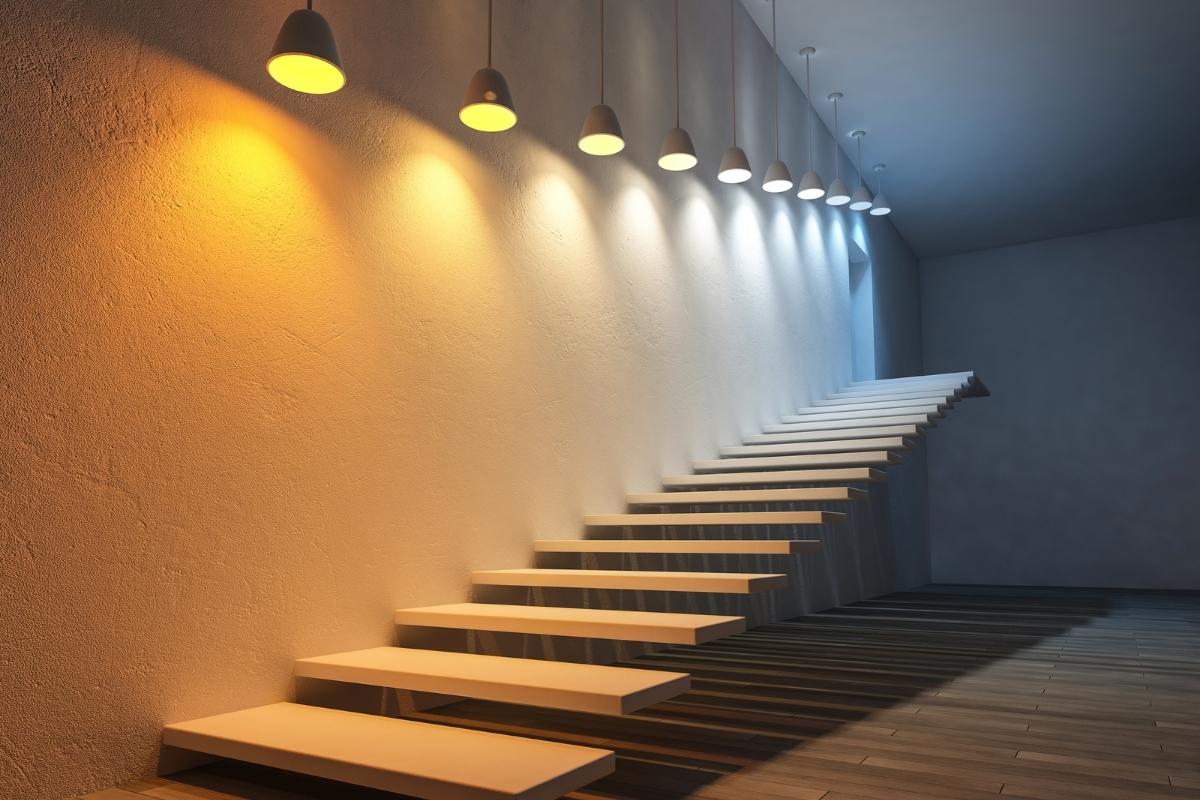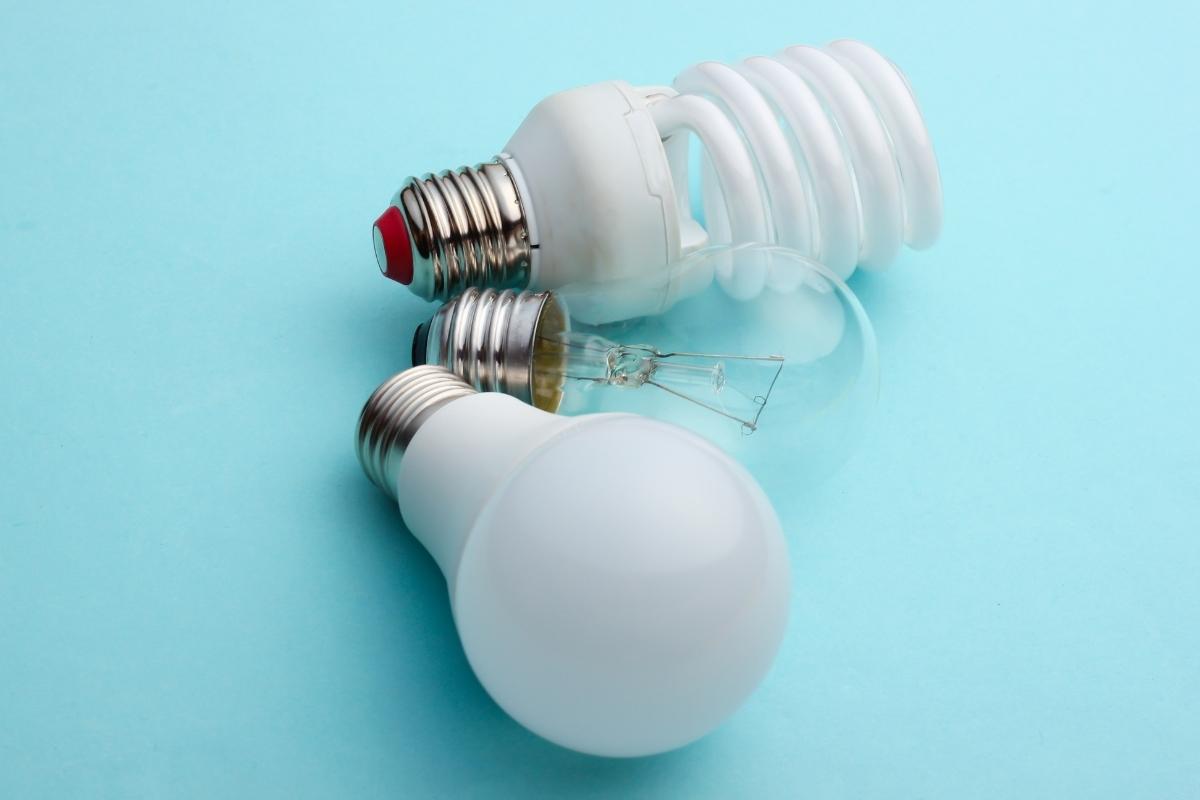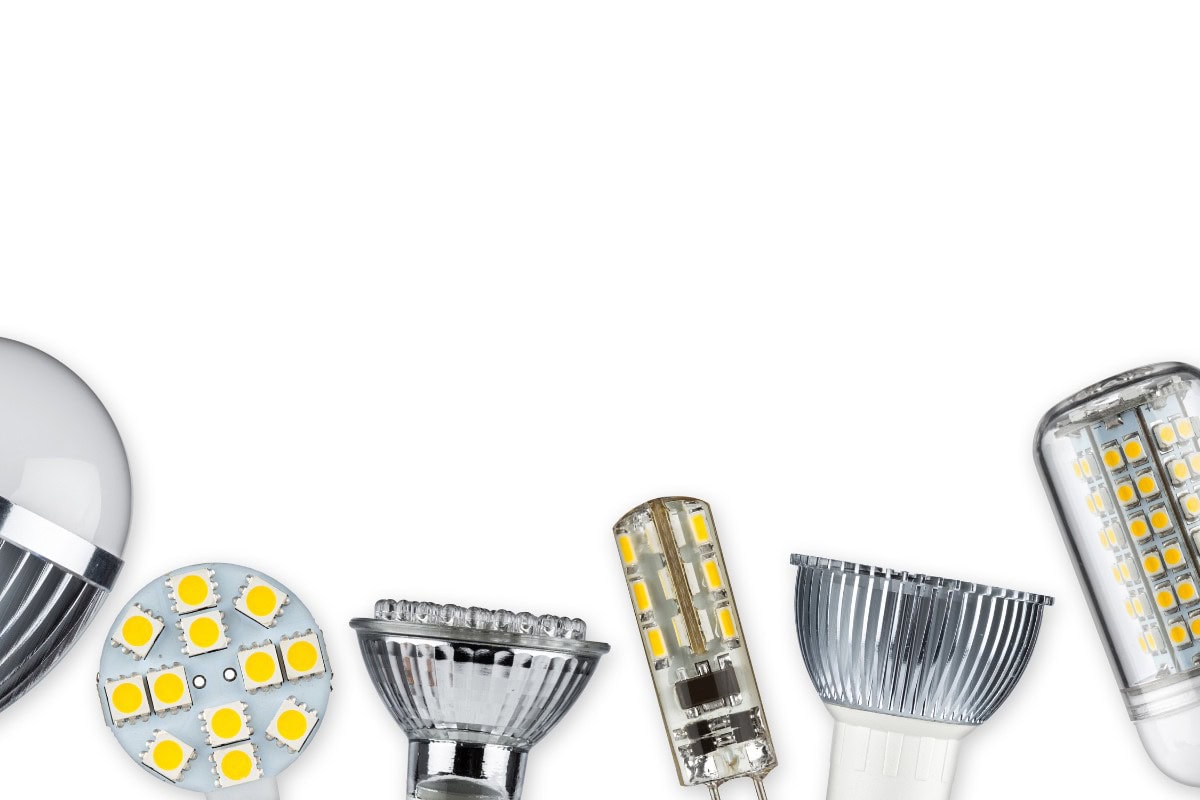Have you ever wondered why white light can look vastly different? A traditional incandescent light bulb gives a yellowish, warmer light, but the modern LED light gives a blueish, brighter, and cooler light. Shouldn’t all white light look the same? The answer is color temperature, which determines the look and feel of the light source and how it appears to our eyes. Every light source has a temperature, and there is a wide range of them, mainly in a warm white or neutral, cool white feel.
Color temperature can affect the lighting and look of every room. It helps set a certain mood in the area and affects the ambiance. A warm white light sets a relaxed mood in your living space, while a cool white light can help you be more productive in an office space. Getting the right type of color temperature in lighting is essential to creating the effect we want in our homes or offices.
Understanding how these colors work and what effect they give is very important to make sure you get the ideal ambiance you are trying to create right. After all, we’ve all had that experience of fitting a light bulb that suddenly makes our room seem more like a dentist’s surgery than the hoped-for romantic boudoir in the wrong hue. Understanding the temperature scale will help you choose the best color of light for your home.
What Is Color Temperature
The color temperature of a light source is the temperature of an ideal black-body radiator that radiates light of a color(hue) comparable to that of the light source. In other words, color temperature is the color of light emitted by an ideal black-body radiator at a particular temperature to describe how warm or cool a light source looks. Color temperature is expressed in kelvins, the unit of measure for absolute temperature, using the symbol K.

For example, the sun can be seen as approximately an ideal black-body radiator. The average surface temperature of the sun is around 5778K, so the color temperature of sunlight above atmosphere is around 5900K.
The changing color of the sun we see on earth during the day is mainly a result of the scattering of sunlight and is not due to temperature changes in the sun.
So, the light emitted from a 5900K color temperature bulb should look the same color as the sunlight above atmosphere. But it does not mean the bulb is as hot as the sun, having an actual 5900K temperature. In short, the color temperature is used to describe how warm or warm a light source looks, regardless of its temperature.
What Is a Black Body Radiator
An ideal black-body radiator is an idealized opaque, non-reflective physical body that absorbs all incident electromagnetic radiation, regardless of frequency or angle of incidence. Black body simply means it absorbs all incident light, including visible, infrared, UV light, etc.
Black-body radiation is the thermal electromagnetic radiation emitted by a black body. It has a specific, continuous spectrum of wavelengths, inversely related to intensity, that depends only on the body’s temperature.
Simply put, the color temperature, or the color of the light emitted from a black body, is constant and only determined by its temperature.
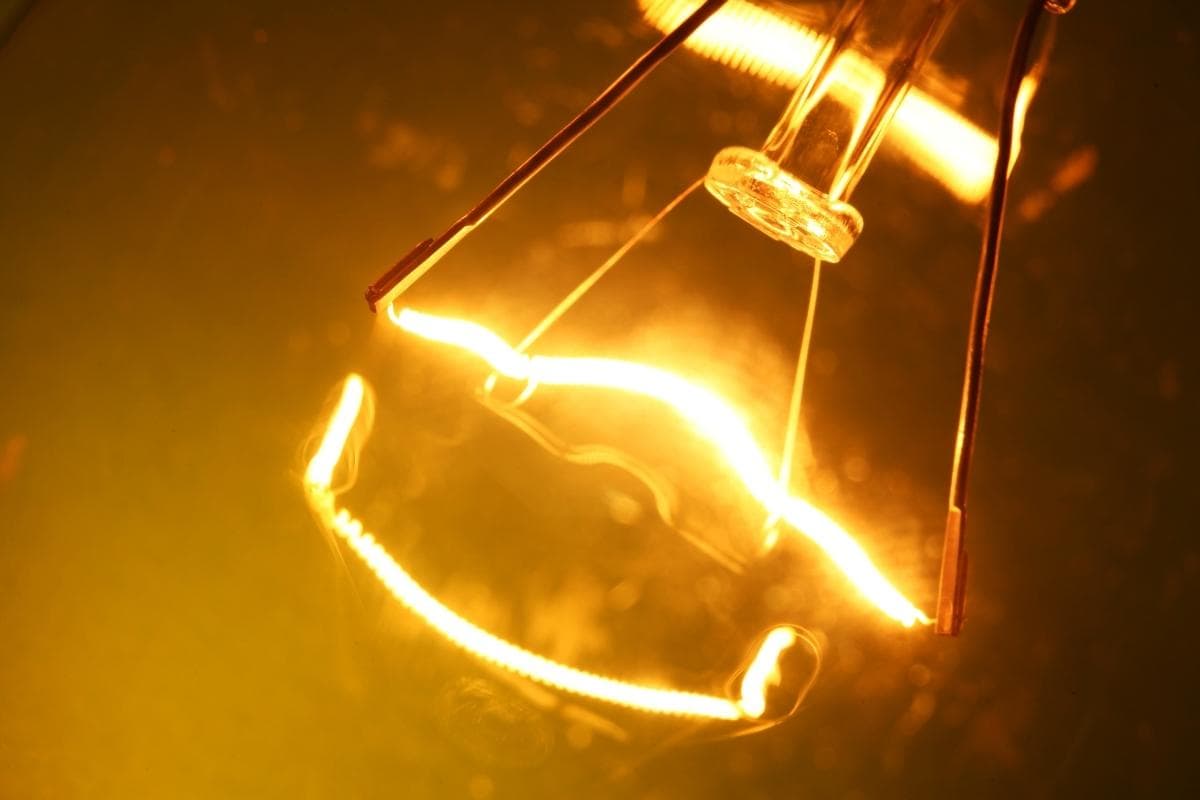
Besides the sun mentioned above, another approximately ideal black body is tungsten light, such as the traditional incandescent and halogen bulbs. Its color temperature is basically the temperature of the filament. When you heat up a tungsten light, you will see the light steadily lighting up from dark to orange, yellow and eventually to blue, full brightness white. The higher the color temperate, the whiter the light will be.
Because color temperature comes from the colors that a block body actually looks at different temperatures, from orange to white and to blue, it’s not meaningful to speak of the color temperature of a purple light because a black-body does not emit purple color light at any given temperature.
What Is Correlated Color Temperature
The correlated color temperature(CCT) is the temperature of the Planckian radiator whose color most closely resembles that of a given stimulus at the same brightness and under specified viewing conditions. Light sources such as fluorescent and LED, which emit light in forms other than thermal radiation, their emitted radiation does not follow the black-body spectrum. By analogy, the color temperature of these light sources can be judged by the correlated color temperature, the temperature of the black-body radiator whose color best approximates the color of the light sources to human perception so that we can map as many light sources as possible onto the same one-dimensional scale of color temperature.
In the lighting industry, color temperature and correlated color temperature are often used interchangeably. And color temperature scale chart we use today is often referred to as the correlated color temperature or CCT.
Color Temperature Chart
The color temperature chart maps the color of a light source(hues of the Planckian locus) on a spectrum and its kelvin temperature on a linear scale. From the chart, we can see that the lower the temperature, the warmer and more yellow the color looks. The higher the temperature, the cooler and more blue the color looks.
Some people might find it opposite to cultural associations, in which we often associate yellow with warm and blue with cold. But the term warm in color temperature refers to the radiated heat flux of traditional incandescent lighting rather than temperature. Most natural warm color light sources emit infrared radiation, and the warmer a light is, the closer it is to the infrared in the spectrum.
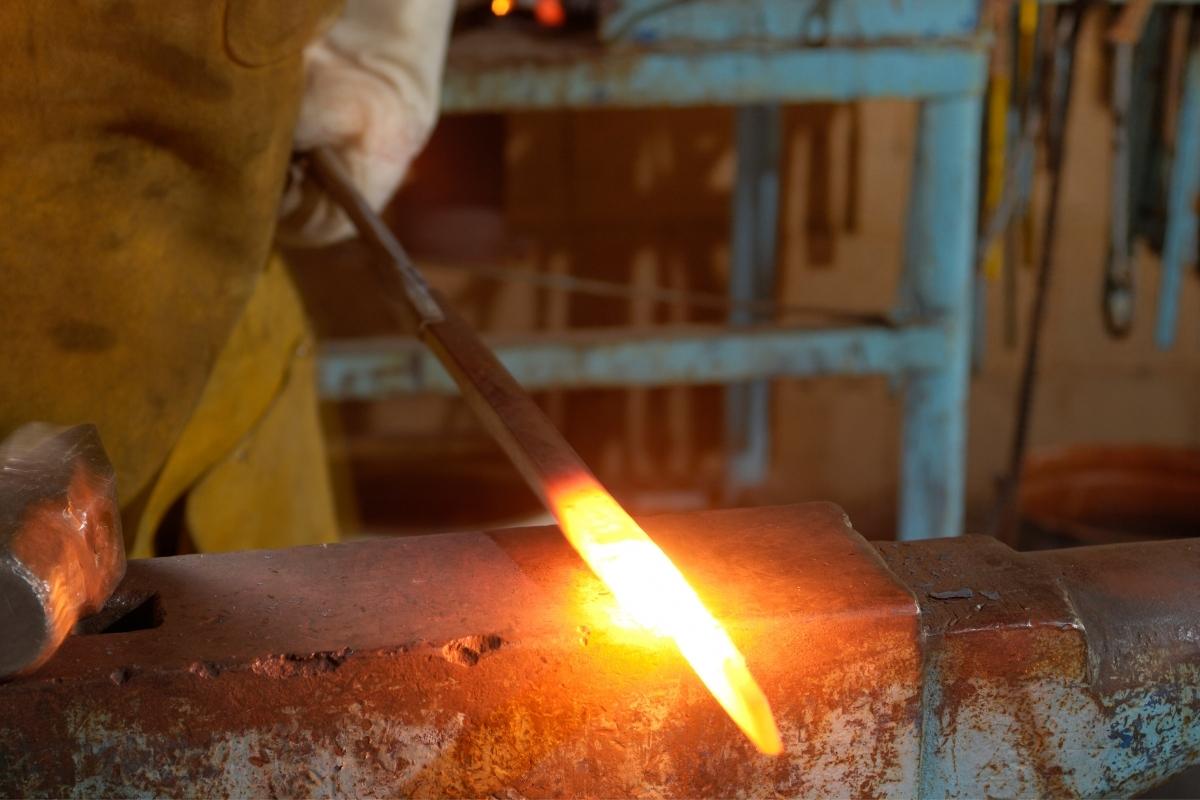
A real-life example to help you understand is when you heat up a metal, or at least when you see workers heat up metal in TV shows, the metal will start to glow as the temperature increases. The color of the metal will turn red first and finally turn blue, white-hot as you gradually heat it up. So, the higher temperature, the more bluish and whiter it looks. Metal workers can also judge the temperature of the metal by the color it looks.
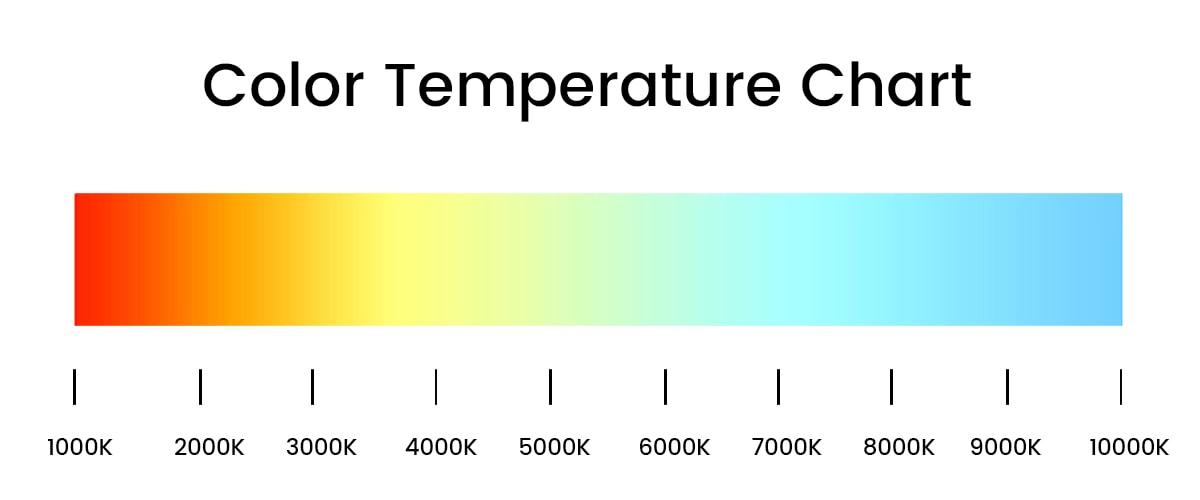
Note that these temperatures are merely characteristic. Light bulb manufacturers have different ranges for each color temperature with considerable variations.
For example, a 4000K, 5000K or 6500K LED bulb can all be called a “daylight” color bulb by different manufacturers. Similarly, manufacturers may call a 4000K bulb either cool white, natural white, neutral white or daylight. This can be very common, so the best and most accurate way to choose the identical color is to look at the kelvin color temperature.
In this article, we have compared and researched dozens of sources and how different reputable lighting brands and big online stores like amazon rate the color temperature. We have also listed the color temperature of the most commonly produced bulbs for you.
Warm White 2000K-3500K
Color temperate ranges between 2000K-3500K are considered warm white because it gives off an orange to yellow, warm tones of hue.
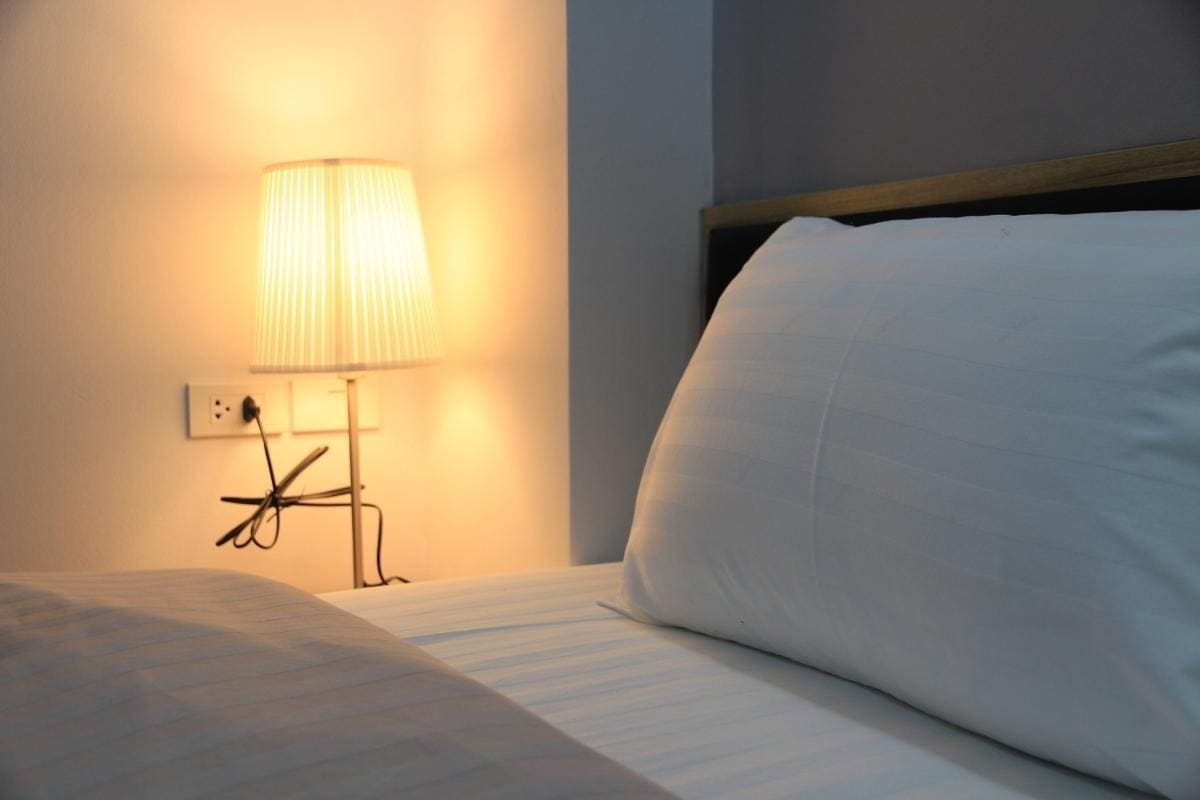
Warm white color temperatures are often used to create an inviting ambiance and a cozy, relaxing atmosphere. It’s largely used in home lighting decoration, such as living areas, bedrooms, dining rooms, commercial places like restaurants, and general-purpose lamps. The warm and yellow color is also softer and easier on the eyes, and people tend to look better in warm light because skin tones and clothing look better under orange and yellow tones.
2200K Amber
2200K color temperature is often called amber because it gives off a hue between yellow to orange, close to amber. 2200K is also called extra warm or ultra warm by different manufacturers.
Most of the 2200K bulbs are vintage Edison or candelabra bulbs to reproduce an old-fashioned warm feeling both in bulb shape and in a hue similar to candlelight and the original tungsten filament Edison bulbs.
2700K Soft White
2700K color temperature is generally called soft white and has a very warm color tone. Soft white is usually associated with the traditional incandescent bulb(normally 2700K).
Soft white color can be used as accent lighting in lounges or general light in bedrooms and living rooms to create a cozy atmosphere with great effect. It also creates a warm, inviting ambiance in restaurants, hotels, boutiques, and reception areas because of its warm glow.
3000K Warm White
3000K color temperature is usually called warm white directly. Warm white is usually associated with the traditional halogen light(normally around 3000-3500K), and it has a whiter, yellow hue compared to incandescent light.
Warm white color temperature mainly provides an overall warm, yellowish hue, but it also gives off a cooler temperature, making it a little bit whiter with more clarity. So, warm white is still considered a friendly, inviting, nice soft tone, which is very suitable for home lighting designs. It’s great for spaces that need more clarity for completing visual tasks, like the kitchen, home office, laundry room, and bathroom, where warmth and relaxation are not a priority.
Neutral White 3500K-4000K
Color temperate ranges between 3500K-4000K are usually considered neutral white because it gives off a neutral, bright, cool white glow.
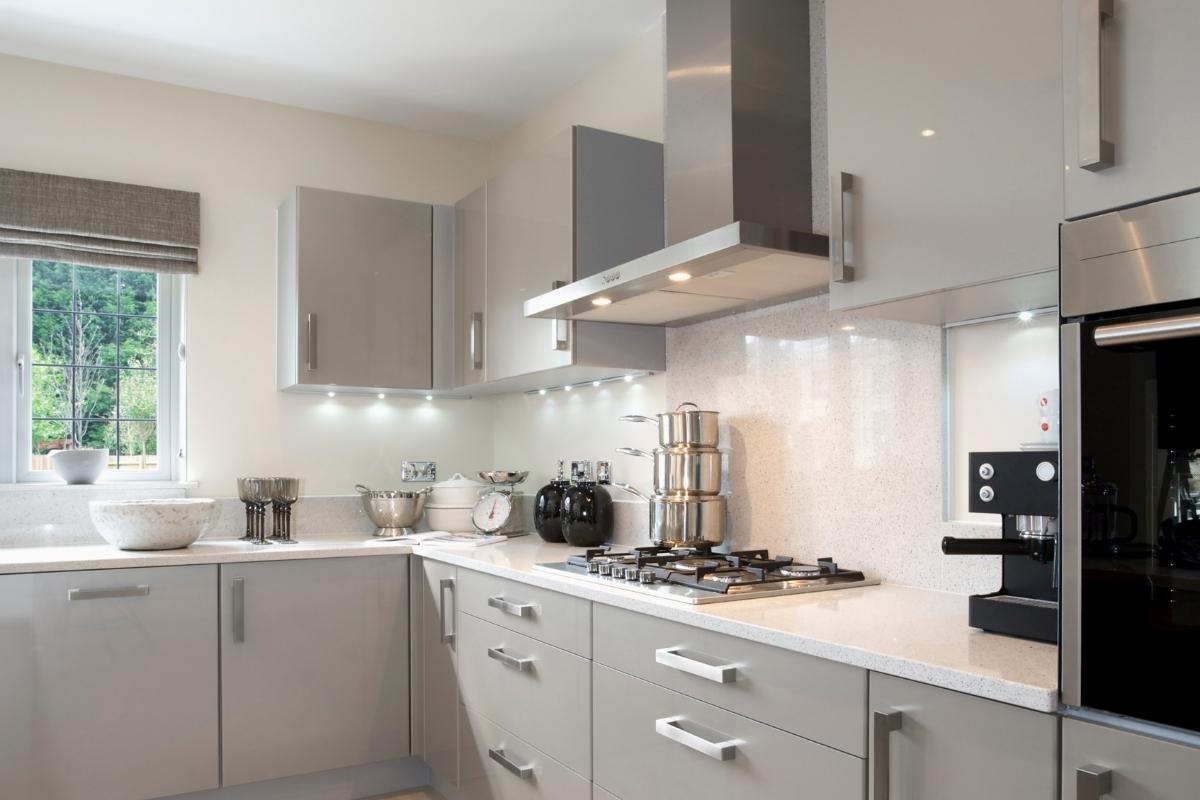
Some manufacturers do not specifically label the neutral white range. Instead, they include it in cool white because it still falls in the cool white category. At least it’s not warm. Neutral white is generally considered a friendly, inviting, clean, and efficient light source.
3500K Natural White
3500K color temperature is widely called natural white. Natural white is usually associated with fluorescent tubes and CFL bulbs(typically 3500K) and has a more neutral, bright white. 3500K color temperature is also called white, bright white, neutral white, and sometimes cool white as well.
Natural white gives off a clean and efficient bright white light, which is still a bit warm and goes easy on human eyes. Being neutral and close to “standard” pure white, it’s widely used in both home and commercial lighting designs as general and task lighting. Natural white is ideal for kitchens, bathrooms, garages, and work environments, and it’s particularly popular in commercial applications, such as offices where people need ‘bright’ light so they can see what they are doing but not so ‘cold’ as to appear clinical.
Cool White 4000K-5000K
Color temperate ranges between 4000K-5000K are considered cool white because it gives off a slightly blue, crisp, cool, white tone of light. Higher color temperatures can make things look cleaner and have more contrast. It makes color variations between objects more apparent in the environment and shows color in a brighter and more vibrant way.
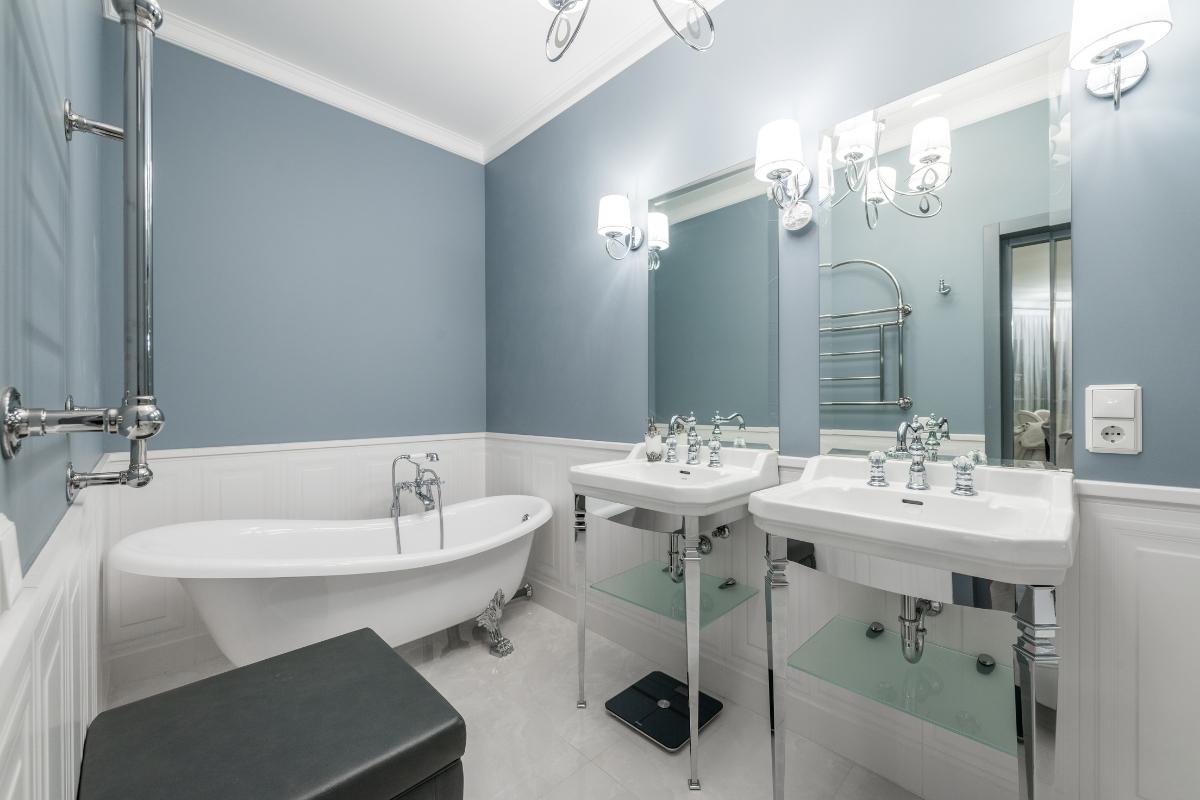
Cool white is broadly used as task lighting and general lighting in residential and commercial applications where clean and quality light is required. The bathroom and kitchen are two great places for cool white because the crisp lighting is beneficial for food preparation and tasks such as putting on makeup. It’s also massively used in outdoor and security lighting, where the quality of light is essential to illuminate the area clearly. Cool white is also widely used in offices because it’s considered an energized color that helps boost productivity to complete jobs.
4000K Cool White
4000K color temperature is mostly called cool white, but sometimes also called daylight white, neutral white, and natural white because it still looks very close to neutral white(3500k).
With a slightly higher temperature than neutral white, cool white adds a tiny blue hint to the bright, neutral white hue, making it look a bit cleaner while being overall neutral.
4100K Cool White
Similar to 4000K cool white, the major difference is that 4100K cool white is mostly seen on fluorescent tubes or CFL bulbs, while 4000K cool white is mostly seen on LED bulbs.
Daylight 5000K & Above
Color temperature ranges above 5000K are considered as daylight or full spectrum white, and it almost appears as blue light. It’s usually associated with the daylight in a bright sunny day. The daylight throughout the day varies drastically, but it is often in the 5000K to 7000K range.
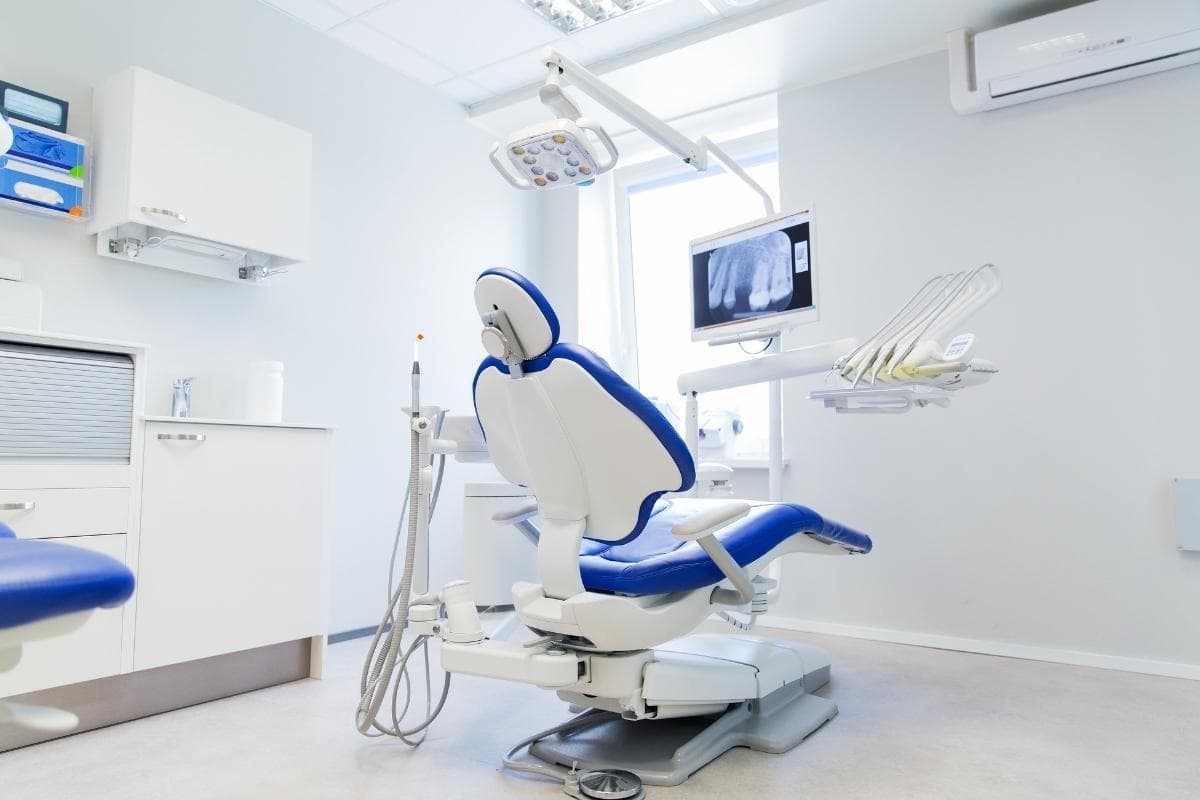
Daylight color may seem too white and harsh to some people and it’s usually not used in homes except for functional areas like garages and home offices. It’s mostly used in places where bright illumination and alertness are needed, such as display areas like museums, jewelry stores, showcase windows, hospitals, commercial and industrial applications, or used as highly focused bright task lighting and security lighting. Similar to cool white, daylight is also popular in offices to increase productivity.
5000K Daylight
5000K color temperature is considered daylight because it most closely resembles natural daylight. Daylight white is required in places where ultimate concentration, illumination and clarity are required, such as warehouses, sports stadiums, hospitals, clinical, and other industries where the brightest light is needed to perform tasks precisely.
Daylight white is very useful for people in working environments who rely on the best possible color rendering, e.g., artists and other creative people. Jewelers also like it as it’s the best light to ensure that cut gems sparkle. Daylight bulbs can also be used by people who suffer from Seasonal Affective Disorder (SAD), although you will need to check that the bulb does simulate natural daylight and not just rely on this color coding.
6500K Daylight White
Besides the fact that the 6500K is whiter than 5000K and is sometimes called super bright or ultra white daylight, 6500K daylight is additionally seen commonly on fluorescent tubes and LED fluorescent replacements, while 5000K is mostly LED bulbs.
Why Is Color Temperature Important
Color temperature has important implications on lighting and influences what we actually see. The black furniture you bought at a shop under a cool white light may look navy blue when you put it under your home’s warm white light. It’s critical to take the color temperature of illumination into account when designing lighting for homes or interior buildings.
Warm white light helps you relax, while cool white light helps you focus and concentrate, and they are opposite to each other. Different color temperatures are dedicated to specific tasks. You don’t want to use the wrong color temperature in the wrong place to ruin your whole design with such a tiny mistake. Using a super white daylight bulb in your bedroom is definitely not a good idea to help you enter sleep. The color temperature of lights is important for homes as well as offices as varied colors of light have a diverse psychological effect.
Besides lighting, color temperature is especially significant in desktop publishing and photography, art, and film industries. Differences in color temperature may lead to disparities in color rendering. The preference for light color temperature is determined by the look you wish to make in an area. Lights of diverse color temperatures are described by their resemblance to known sources or with characteristic adjectives.
How to Choose the Best Color Temperature
What color temperature is best for you? Only you can decide. Here are some useful tips to help you choose the best color temperature for your home or office.
Have a Plan Ahead
The first general rule is to have a plan ahead. Know what color temperature is, what different color temperatures can do to your lighting design and what effect you want. Having a detailed plan and sticking to it make you successful in any task you do.
If you are accustomed to the light produced by a standard incandescent bulb, you are likely to prefer warm white LED light bulbs with a Kelvin rating in the 2700K to 3000K range.
3500K to 4000K neutral white might be the best choice for complementing your decor if you cannot make up your mind between warm or cool.
If you are selecting LED lighting for your commercial space, you should consider bulbs with temperature ratings in the 3500K to 5000K range. This type of light is often referred to as pure white or noon-time daylight. This cooler type of lighting will tend to keep your work staff more alert, more productive, and less likely to make errors due to sleepiness. Garages, basements, and outdoor lighting are also good places to go with cool white LED light bulbs with higher Kelvin temperatures.
In a retail space, color temperatures of 5000K will enhance all of the colors in your store equally, and some believe this type of lighting may actually stimulate sales. This result is not promised, but it makes sense that if a customer has better visibility of what you are offering, they may be more likely to buy.
Do Not Mix Color
Do not mix color temperatures in a room. You can have different color temperatures in different individual rooms, but better keep one single light source in one room or the entire house. Use mixed color temperature light sources only when you already have a creative plan ahead and know what effect you want to achieve.
Match the Color Scheme and Design
Consider the design style, finishes, and color palette of the space and choose a matching color temperature. If you have many natural materials like hardwood floors, tongue and groove ceilings, and wood furniture, warm white colors will make your house look amazing. With a glow similar to old-fashioned candlelight, gaslight, and incandescent lights, warm color lights will not only help your traditional house look better but also help you reminisce about the good old classic homes. In contrast, cool white light looks best if you have a modern, minimalist designed home.
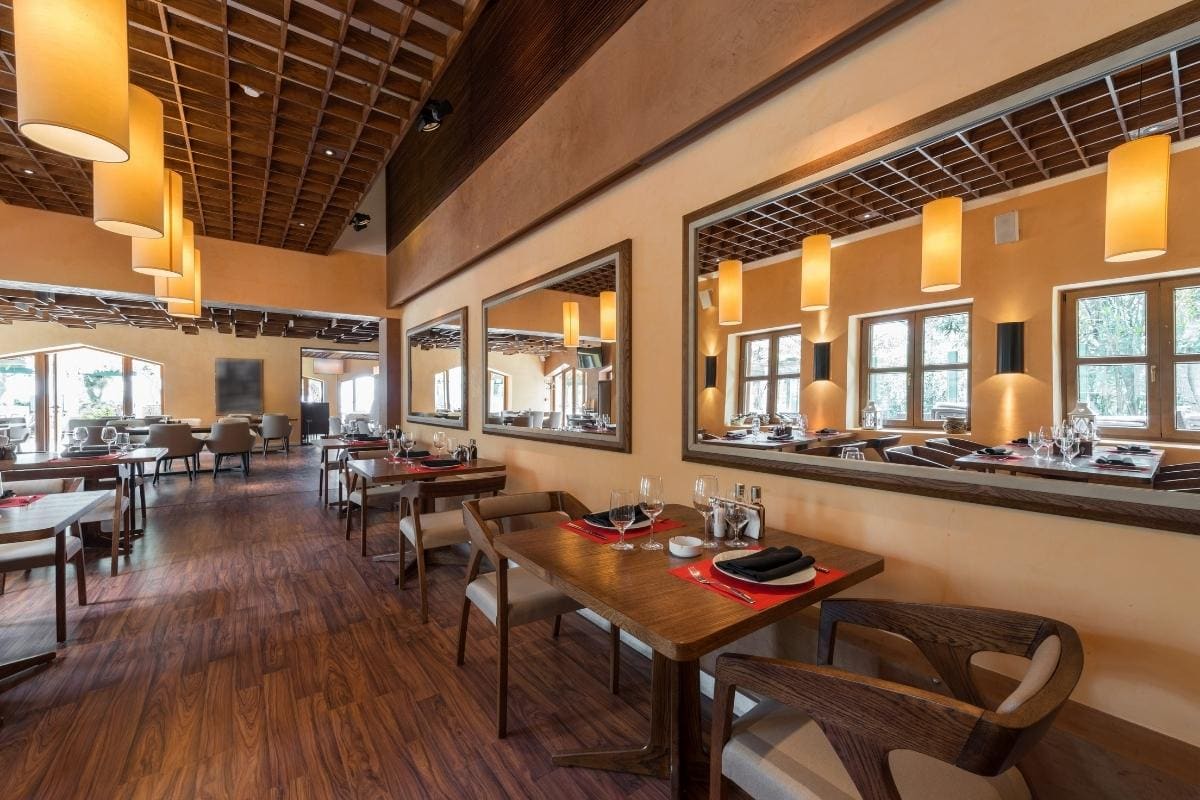
The color and finishes of your house, such as walls, floor, ceilings, and furnishings, are also important. Red, orange, yellow and wood-look-like colors look beautiful under warm white light but dull in cool white light. Blue, black, green, white, and grey colors look crisp and impressive in cool white light but flat and muddy in warm white light.
If your house already has enough natural lights available, you can consider cool white light to not make it too warm.
Warm to Cool White Light
If you cannot make up your mind or prepare to change the application of the space in the future, you can select multi-colored, warm to cool white, smart bulbs to tune the color temperature of your light anytime you need. It’s fantastic for creating different effects for different tasks and moods.
Best Color Temperature Recommendations
Here are some color recommendations for each space or application to ensure you get the optimal lighting experience for relaxing, ambiance, clarity, productivity or other specific tasks.
Bedroom
Bedrooms are considered the most intimate space in your room. Warm light gives a relaxing atmosphere to help you rest and sleep. The best color temperature for bedrooms is soft white and warm white between 2700K-3000K.
Bathroom
Bathrooms should look clean and fresh and have good functional lighting as we need to do many things there, such as cleaning, washing, shaving, applying makeup, etc. The best color temperature for bathrooms is neutral or cool white between 3000K-4000K.
Living Room
Living room should look inviting as we need to spend a lot of time there relaxing with friends and family and entertaining such as watching TV or gaming. The best color temperature for living rooms is warm white between 2700K-3000K. You can also add a dimmer to make the living room more functional with an extended color range.
Dining Room
Warm light helps create a good mood while eating and enjoying your food. The best color temperature for dining rooms is warm white between 2700K-3000K.
Kitchen
Kitchen requires bright light for preparing food and sometimes reading recipes. A cool white or neutral white can all do a good job making our kitchen well-lit. The best color temperature for kitchens is cool white between 3000K-4000K. Usually, the neutral 3500K or a 4000K cool white are all ideal choices for your kitchen.
Garage and Home Office
Workspaces in your home, such as the garage or home office, all require bright, functional light because you need to be productive and focused on your jobs and stay there for hours. The best color temperature for garages, home offices or other home workspaces is neutral to cool white between 3000K-5000K.
Outdoor and Security Lighting
Outdoor lighting and security lighting require bright light to make objects more apparent in the environment. The best color temperature for outdoor lighting and security lighting is cool white between 4000K-5000K.
Office
Office and other commercial applications require bright, functional light for people to stay productive and focused. The best color temperature for offices is neutral to cool white between 3000K-5000K. Usually, 4000K cool white is an ideal choice and is mostly used in office spaces.
Retail
Retail, such as general retail, jewelry store, and other display areas, can require varied color temperatures for different purposes. It all depends on what effect each retailer wants to achieve. You can use a warmer light for atmosphere or a cooler light for displaying your diamonds to customers and some use mixed color temperatures. The best color temperature for retail is warm to cool white usually between 2700K-4000K.
Restaurant
Restaurant may require diverse color temperatures. Some high-end restaurants require a warm and relaxing atmosphere for customers to chat and do business other than eating, while some quick-serve restaurants may need cool and bright light for customers to simply enjoy the food. The best color temperature for restaurants is usually warm to cool white between 2200K-4000K. Warm color(2200K-3000K) works best in classic restaurants and cool white(3000K-4000K) works best in modern restaurants.
Dimming and Color Temperature
It’s always good to use dimmers with lighting whenever possible. Dimmers can help you save energy and be more flexible in creating different atmospheres in the room.
Traditional tungsten bulbs, like incandescent or halogen bulbs, get lower color temperatures and become more orange when dimmed because dimming tungsten bulbs is the same as lowering their temperature.
LED bulbs do not use tungsten for illumination. They can keep the same color temperature when dimmed, so only brightness is affected.

